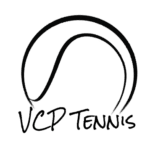MADRID — Dinara Safina, the former Hologic WTA Tour No. 1, is well aware that it’s far easier to play than to watch. And yet, she recently signed up to return to elite tennis as a coach.
Safina may have been rethinking that decision here on Friday when Diana Shnaider and her partner Mirra Andreeva were scuffling out on the Mutua Madrid Open’s Court 5. Eventually, they overcame Nicole Melichar-Martinez and Liudmila Samsonova — in a 12-10 match-tiebreak.
To see Safina twisting and grimacing in her seat was difficult. Heart attack?
“Almost,” she said, shaking her head.
Said Shnaider: “I can imagine that. I almost had one, too.”
Safina, one of the best clay-court players of her day, is back on the red dirt, working with Shnaider, who turned 21 earlier this month. She’s ranked No. 13, and Saturday she dropped a pristine 6-0, 6-0, 44-minute victory on Anastasija Sevastova.
It was Shnaider’s first shutout at WTA Tour level (she did it twice in ITF events in Kazakhstan and Turkey), and it sends her into a Monday Round of 16 match against either No. 2 Iga Swiatek or No. 31 Linda Noskova.
How did Safina and Shnaider connect?
Shnaider was coached by Igor Andreev until the end of last season and then her father, Maxim, a lawyer, took over temporarily. When Shnaider began searching for a new coach earlier this year, her mother, Yulia, contacted 2004 French Open champion Anastasia Myskina for some ideas. Myskina, who is good friends with Safina and a colleague at the sports channel “Bolshe!” — they talk almost every day — suggested Safina. It wasn’t long before Yulia texted Safina.
“They asked me if I can come to Dubai, and I said it’s very fast, I cannot change my plans,” Safina told wtatennis.com. “Then with U.S. tournaments [Indian Wells and Miami], I have no visa. So I said, `OK, I’m good for clay-court season.’
“I spoke on it with my family. For me, it was the perfect timing.”
Shnaider said she’s enjoying the practices and spending time together. Safina’s biggest asset, she added, is her deep well of experience as a top-notch player.
“A lot of mental strength, focusing on the right things,” Shnaider said. “How to manage emotions better. It’s just small adjustments, where to put the ball better in the court. Stepping in to be more aggressive. Seize opportunities, stepping in, coming to the net.
“I would say mostly not pushing myself down into negative emotions. If I’m doing a…





